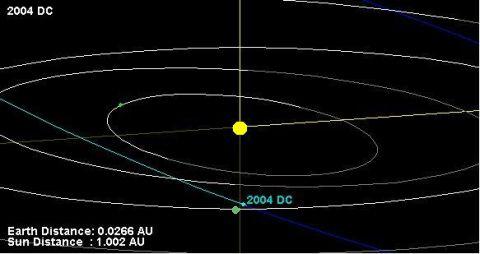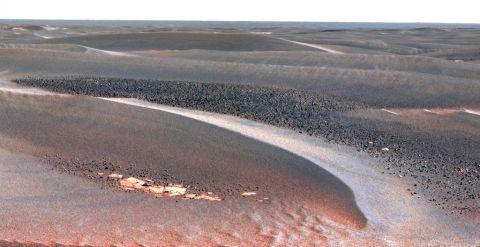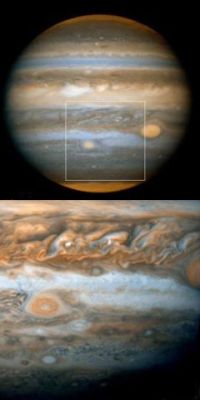If you’re up early on April 17 through 19th and skies where you live are clear, don’t miss this opportunity to see “George,” the sixth naked-eye planet!
NASA – Venus Meets a Planet Named George
 April 11, 2006: Ancient people didn’t have TV or electric lights. So, when the sun went down every night, they got their entertainment by watching the sky. And it was entertaining. Without city lights to interfere, the Milky Way was spectacular. Meteors flitted across the sky. Zodiacal lights chased the sunset.
April 11, 2006: Ancient people didn’t have TV or electric lights. So, when the sun went down every night, they got their entertainment by watching the sky. And it was entertaining. Without city lights to interfere, the Milky Way was spectacular. Meteors flitted across the sky. Zodiacal lights chased the sunset.
Right: Voyager 2 took this picture of Uranus in 1986.
Of special interest were the five naked-eye planets, the ones you could see without a telescope. (The ancients didn’t have telescopes, either.) Countless hours were spent watching Mercury, Venus, Mars, Jupiter and Saturn, whose movements were thought to control the affairs of men.
Would you believe, in spite of all that watching, they missed one? There is a sixth planet you can see without a telescope, a planet named George.
“George” is not as bright as the others, but it is there, glowing like an aqua-blue star of 6th magnitude. It measures four times wider than Earth, has more than 30 moons and a dozen or so thin rings. George goes around the sun every 84 years, always spinning on its side as if something knocked it over.
George is better known as Uranus.
[ . . . ]
On April 17th, 18th and 19th, Venus and Uranus are going to have a close encounter in the dawn sky. Simply look east before sunrise. As a guidepost, Venus can’t be beat. It is so bright, people often think it’s a landing airplane. Simply scan Venus with a pair of binoculars (or a small telescope) and you’ll see Uranus right beside it. If the sky is very dark, you may be able to lift your eyes from the optics and see Uranus directly.
[read more]



 There will be no tsunamis, firestorms or mass extinctions to spoil your Memorial Day weekend.
There will be no tsunamis, firestorms or mass extinctions to spoil your Memorial Day weekend.
 Hubble has sent back the clearest pictures yet of Jupiter’s new red spot.
Hubble has sent back the clearest pictures yet of Jupiter’s new red spot.  From a vantage point approximately 1/100 of the distance from the Earth to the Sun ACE performs measurements over a wide range of energy and nuclear mass, under all solar wind flow conditions and during both large and small particle events including solar flares. ACE provides near-real-time solar wind information over short time periods. When reporting space weather ACE can provide an advance warning (about one hour) of geomagnetic storms that can overload power grids, disrupt communications on Earth, and present a hazard to astronauts.
From a vantage point approximately 1/100 of the distance from the Earth to the Sun ACE performs measurements over a wide range of energy and nuclear mass, under all solar wind flow conditions and during both large and small particle events including solar flares. ACE provides near-real-time solar wind information over short time periods. When reporting space weather ACE can provide an advance warning (about one hour) of geomagnetic storms that can overload power grids, disrupt communications on Earth, and present a hazard to astronauts.  April 11, 2006: Ancient people didn’t have TV or electric lights. So, when the sun went down every night, they got their entertainment by watching the sky. And it was entertaining. Without city lights to interfere, the Milky Way was spectacular. Meteors flitted across the sky. Zodiacal lights chased the sunset.
April 11, 2006: Ancient people didn’t have TV or electric lights. So, when the sun went down every night, they got their entertainment by watching the sky. And it was entertaining. Without city lights to interfere, the Milky Way was spectacular. Meteors flitted across the sky. Zodiacal lights chased the sunset.